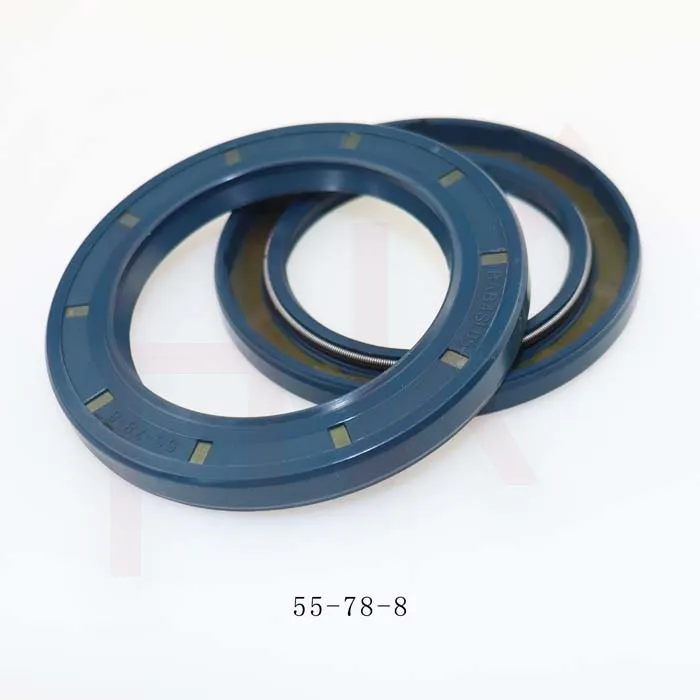Aug . 29, 2024 22:28 Back to list
Metric Rod Wiper Seals - High-Performance Sealing Solutions
Understanding Metric Rod Wiper Seals A Comprehensive Overview
Metric rod wiper seals are essential components in hydraulic and pneumatic systems, ensuring that moving rods operate smoothly and efficiently. These seals play a pivotal role in protecting the internal mechanisms of machinery and equipment from contaminants, thereby enhancing the longevity and performance of the systems they are part of. This article explores the various aspects of metric rod wiper seals, including their design, materials, applications, and benefits.
Design and Functionality
Metric rod wiper seals are designed to fit precisely around the moving rods in hydraulic cylinders or pneumatic actuators. They serve as the first line of defense against dirt, dust, moisture, and other particles, preventing these contaminants from entering the internal components of the machinery. Typically, these seals are constructed to have a lips or edges that wipe the rod clean as it retracts and extends, ensuring that any potential debris is removed before it can cause damage.
The design of wiper seals varies based on specific applications and operational requirements. Some designs feature multiple lips for enhanced wiping action, while others incorporate special profiles for increased flexibility and performance under extreme conditions. Choosing the right design is crucial for maintaining optimal function in hydraulic and pneumatic systems.
Materials Used
metric rod wiper seals

The materials used in the production of metric rod wiper seals are diverse, depending on the environmental conditions they will face. Common materials include polyurethane, rubber, and thermoplastics, each offering different advantages in terms of wear resistance, temperature tolerance, and chemical compatibility. For instance, polyurethane seals are renowned for their durability and resistance to abrasion, making them ideal for heavy-duty applications. Conversely, rubber seals provide good elasticity and are often used in less demanding environments.
Applications
Metric rod wiper seals are widely used across various industries, including automotive, manufacturing, aerospace, and construction. In the automotive industry, they protect hydraulic systems in vehicles, ensuring smooth operation of brakes and steering systems. In manufacturing, these seals maintain the integrity of machinery by keeping hydraulic systems free of debris. Applications in aerospace often demand seals that can withstand extreme temperatures and pressures, showcasing the versatility of metric wiper seals in demanding environments.
Benefits
The primary benefit of using metric rod wiper seals is their ability to enhance the reliability and efficiency of hydraulic and pneumatic systems. By keeping contaminants at bay, they help prevent premature wear and tear on components, reducing maintenance costs and downtime. Additionally, effective sealing contributes to improved performance and responsiveness of the machinery, which is crucial in high-speed and high-stakes environments.
In conclusion, metric rod wiper seals are vital components in numerous applications where the protection of moving parts is essential. Their design, material composition, and functionality are tailored to meet the demands of various industrial environments. By understanding these aspects, engineers and technicians can make informed decisions when selecting wiper seals, ensuring the efficacy and durability of their systems. Embracing the importance of wiper seals ultimately leads to enhanced machinery performance and longevity, underscoring their indispensable role in modern engineering.
-
TCN Oil Seal Metal Ring Reinforcement for Heavy Machinery
NewsJul.25,2025
-
Rotary Lip Seal Spring-Loaded Design for High-Speed Applications
NewsJul.25,2025
-
Hydraulic Cylinder Seals Polyurethane Material for High-Impact Jobs
NewsJul.25,2025
-
High Pressure Oil Seal Polyurethane Coating Wear Resistance
NewsJul.25,2025
-
Dust Proof Seal Double Lip Design for Construction Equipment
NewsJul.25,2025
-
Hub Seal Polyurethane Wear Resistance in Agricultural Vehicles
NewsJul.25,2025
-
The Trans-formative Journey of Wheel Hub Oil Seals
NewsJun.06,2025
Products categories
















